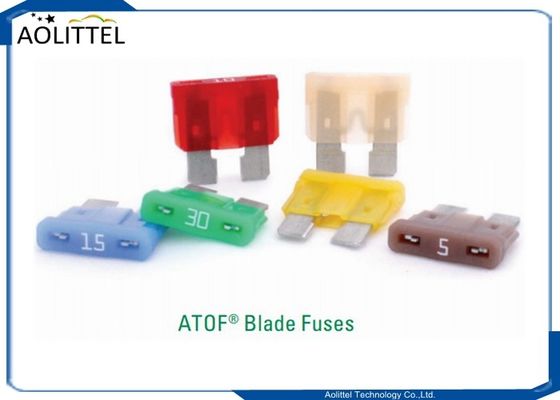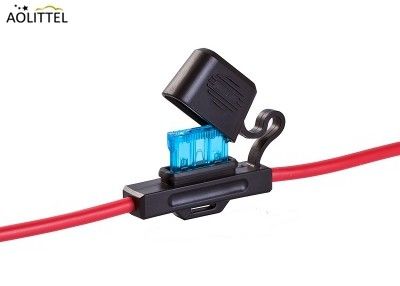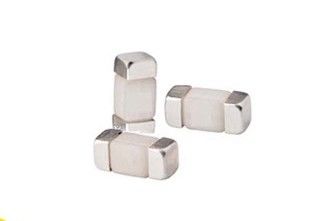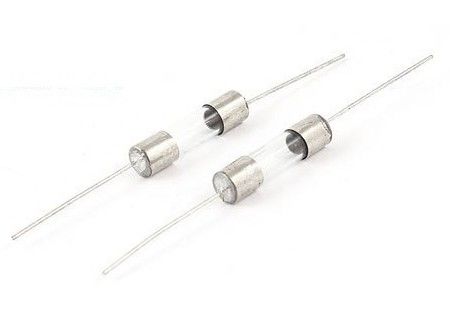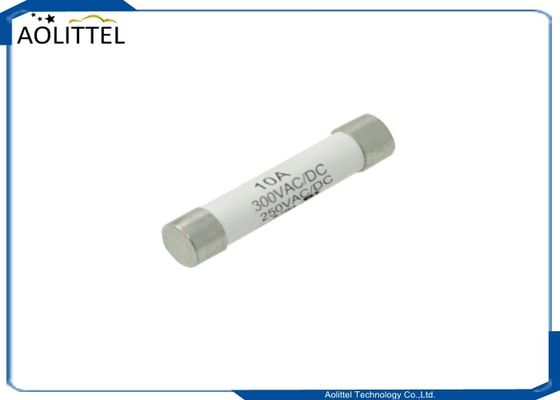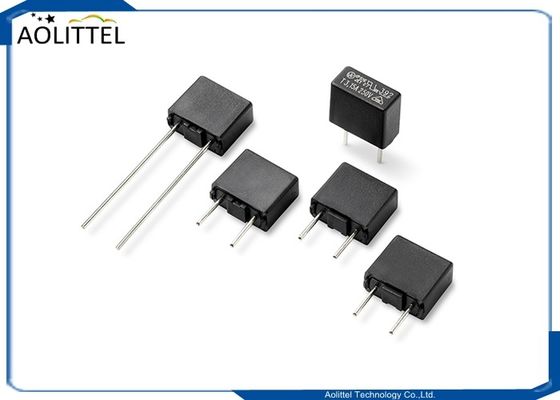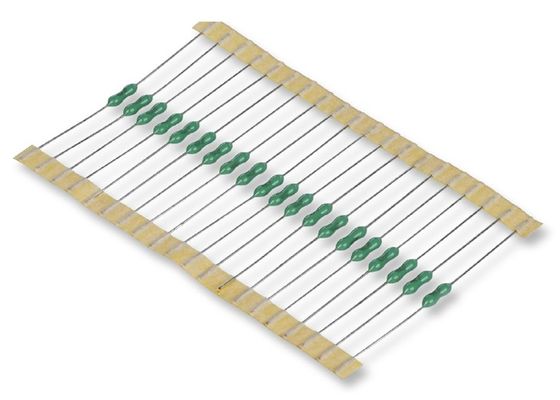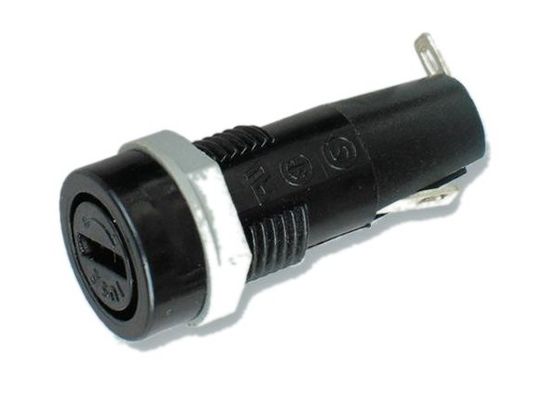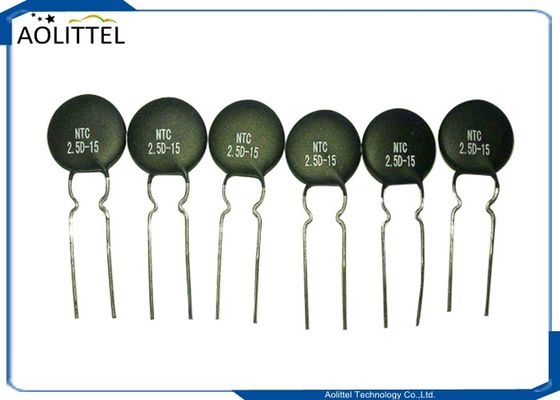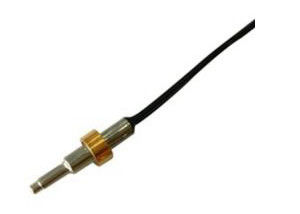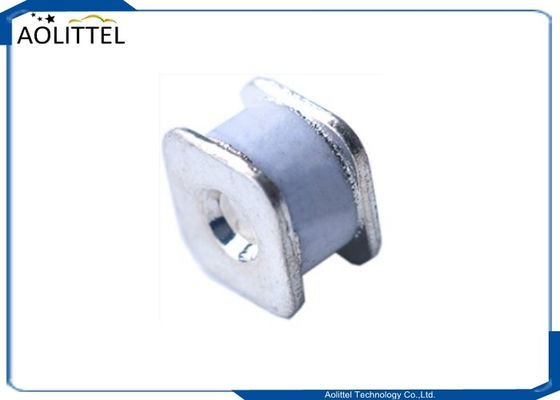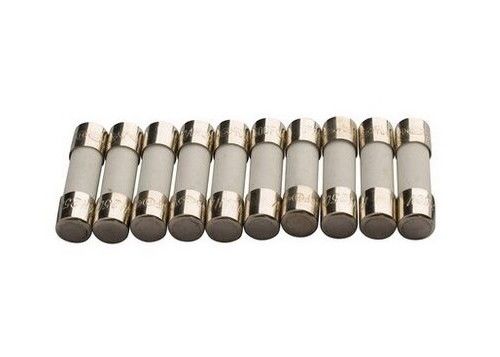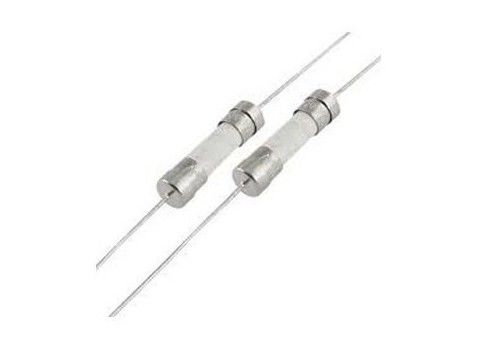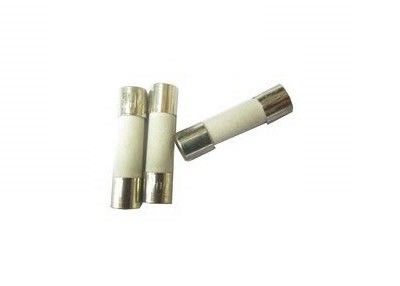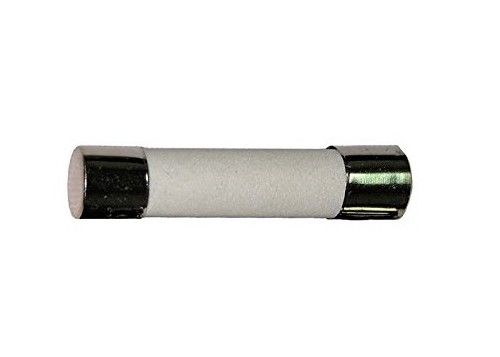One Time 5x20mm Slow Blow Ceramic Tube Fuse 250V 125V 250mA T With Breaking Capacity 1000A For High Current Application
Description
5x20mm slow blow ceramic body cartridge fuse designed for big current application , honored with UL,cUL certificate, suitable for various kinds of electronic devices’ circuit over current protection. Widely used in industrial of Lighting, Power supply and Adapter applications, etc.
___________________________________________________________ Download________
Download________
Application
Used as supplementary protection in appliance or utilization equipment to provide individual protection for components or internal circuits.
Features
• Designed to UL/CSA/ ANCE 248 Standard
• Available in cartridge and axial lead format
• RoHS compliant and lead-free
• Wide current range
• Multip voltage suitable global power application
Electrical Performances
A = 250V/ B =125V
|
Part
No.
|
Ampere
Rating
|
Voltage
Rating
|
Breaking
Capacity
|
I2TMelting
Integral(A2.S)
|
Agency Approvals
|
| UL |
cUL |
PSE
|
| 5.250BTC0100A/B |
100mA |
250V/125V |
10000A@125 V AC (200mA~10A);
35A@250V AC (200mA~1A);
100A@250V AC (1.25A~3.5A);
200A@250V AC (4A~10A).
|
0.002 |
○ |
○ |
○ |
| 5.250BTC0125A/B |
125mA |
250V/125V |
0.003 |
○ |
○ |
○ |
| 5.250BTC0160A/B |
160mA |
250V/125V |
0.005 |
○ |
○ |
○ |
| 5.250BTC0200A/B |
200mA |
250V/125V |
0.01 |
● |
● |
○ |
| 5.250BTC0250A/B |
250mA |
250V/125V |
0.02 |
● |
● |
○ |
| 5.250BTC0300A/B |
300mA |
250V/125V |
0.04 |
● |
● |
○ |
| 5.250BTC0315A/B |
315mA |
250V/125V |
0.045 |
● |
● |
○ |
| 5.250BTC0350A/B |
350mA |
250V/125V |
0.055 |
● |
● |
○ |
| 5.250BTC0400A/B |
400mA |
250V/125V |
0.07 |
● |
● |
○ |
| 5.250BTC0500A/B |
500mA |
250V/125V |
0.1 |
● |
● |
○ |
| 5.250BTC0630A/B |
630mA |
250V/125V |
0.2 |
● |
● |
○ |
| 5.250BTC0750A/B |
750mA |
250V/125V |
0.35 |
● |
● |
○ |
| 5.250BTC0800A/B |
800mA |
250V/125V |
0.45 |
● |
● |
○ |
| 5.250BTC1100A/B |
1A |
250V/125V |
0.9 |
● |
● |
○ |
| 5.250BTC1125A/B |
1.25A |
250V/125V |
1.3 |
● |
● |
○ |
| 5.250BTC1150A/B |
1.5A |
250V/125V |
1.6 |
● |
● |
○ |
| 5.250BTC1160A/B |
1.6A |
250V/125V |
2.5 |
● |
● |
○ |
| 5.250BTC1200A/B |
2A |
250V/125V |
5.8 |
● |
● |
○ |
| 5.250BTC1250A/B |
2.5A |
250V/125V |
7.6 |
● |
● |
○ |
| 5.250BTC1300A/B |
3A |
250V/125V |
8.1 |
● |
● |
○ |
| 5.250BTC1315A/B |
3.15A |
250V/125V |
11 |
● |
● |
○ |
| 5.250BTC1350A/B |
3.5A |
250V/125V |
19 |
● |
● |
○ |
| 5.250BTC1400A/B |
4A |
250V/125V |
28 |
● |
● |
○ |
| 5.250BTC1500A/B |
5A |
250V/125V |
40 |
● |
● |
○ |
| 5.250BTC1600A/B |
6A |
250V/125V |
50 |
● |
● |
○ |
| 5.250BTC1630A/B |
6.3A |
250V/125V |
64 |
● |
● |
○ |
| 5.250BTC1700A/B |
7A |
250V/125V |
107 |
● |
● |
○ |
| 5.250BTC1800A/B |
8A |
250V/125V |
133 |
● |
● |
○ |
| 5.250BTC2100A/B |
10A |
250V/125V |
242 |
● |
● |
○ |
| 5.250BTC2150A/B |
15A |
250V/125V |
368 |
● |
● |
○ |
| 5.250BTC2200A/B |
20A |
250V/125V |
442 |
● |
● |
○ |
| 5.250BTC2250A/B |
25A |
250V/125V |
568 |
● |
● |
○ |
| 5.250BTC2300A/B |
30A |
250V/125V |
715 |
● |
● |
○ |
Dimension Unit:mm
Without lead

With lead

Blown Standards
|
% of Ampere Rating(In)
|
Blowing Time
|
| 100%* In |
4 hours Min |
| 135%* In |
1 hour Max |
| 200%* In |
120 sec Max |
How to Test and Replace a Microwave Ceramic Fuse
Tools:
Plastic or rubber gloves
Replacement fuse
Screwdriver
Dry cloth
Voltmeter

mmeter

Along with glass fuses, ceramic fuses are among the most commonly used fuses in household electrical appliances. This includes microwave ovens. A microwave oven is prone to short circuiting caused by severe voltage fluctuations.
Presence of a ceramic fuse ensures that an electrical surge is unable to harm the inner components of the microwave. Unlike glass fuses, ceramic fuses are filled with a special filler material. Usually, this is sand. When a violent electrical current tries to surpass the fuse, the overheated sand within the fuse breaks through, breaking the electrical circuit. This is because sand is a very poor conductor of electricity. Further, sand-filled ceramic fuses have a higher breaking point since sand can sustain the extra heat to a greater extent. However, while protecting the microwave oven, a fuse tends to get blown or it melts. Such a ceramic fuse needs replacement. This can be easily done using the following information.
Step 1 - Getting Started: Basic Precautions and Locating Ceramic Fuse Holder
Get started by wearing rubber gloves. Ensure the surface around the microwave is completely dry. Remove all the connecting power cords of the microwave. Ideally, you should turn off the main electrically supply. If the room is a bit dark, use a flashlight. Turn the microwave oven so that its rear is accessible. Here, you are likely to find a metallic plate secured with screws.
Some of the older models might have a dedicated fuse box located just below the bottom plate of the microwave. Use a screwdriver to loosen these screws and remove the back-plate. Trace the power cord that will lead you to the main electrical connections. Usually, the microwave fuse holder is located in vicinity of where the power cord is attached internally.

Step 2 - Locating and Testing Microwave Ceramic Fuse
The fuse holder clips are comprised of a mild spring steel and should not be bent. Using a small screwdriver the fuse should be easily snapped out of the holder. If the fuse seems stuck, use pliers for this. However, don’t induce too much pressure or you might harm the conducting surface of the fuse. You need to test whether the ceramic fuse has blown. For this, use a voltmeter

mmeter. This is necessary for ceramic fuses since they don’t develop a blackened appearance like blown, glass fuses.
Use the testing probes of the voltmeter to test the metallic ends of the fuse. The voltmeter suggests the resistance of the fuse. It should give a reading of zero or thereabouts. However, in blown fuses, the readings are much higher or infinite.

Step 3 - Procuring New Microwave Ceramic Fuse
Some of the fuses may not carry a voltage or amperage labeling. This makes it difficult to decode the appropriate replacement. It is better that you take the blown fuse to an electrical supply store to get an exact replacement. Ideally, you should buy a couple of extra fuses for the near future.
Step 4 - Replacing Microwave Ceramic Fuse
You don’t need tools to install the new fuse. Simply insert it within its dedicated slot in the fuse holder. If the fuse doesn’t seem to fit in its slot, clean the fuse holder and fuse slots. For this, use a dry cloth wrapped around the tip of a flat head screwdriver. Use the covered tip to gently scrape the fuse surfaces. Re-insert the replacement fuse. Secure the microwave back cover and tighten its screws.

 Your message must be between 20-3,000 characters!
Your message must be between 20-3,000 characters! Please check your E-mail!
Please check your E-mail!  Your message must be between 20-3,000 characters!
Your message must be between 20-3,000 characters! Please check your E-mail!
Please check your E-mail! 
